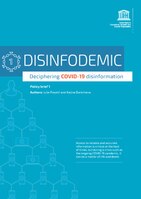
Photo from wikipedia
HIV-1 infection exhibits a significant sex bias. This study aimed at identifying and examining lymphocyte associated sex differences in HIV-1 pathogenesis using a data-driven approach. To select targets for investigating… Click to show full abstract
HIV-1 infection exhibits a significant sex bias. This study aimed at identifying and examining lymphocyte associated sex differences in HIV-1 pathogenesis using a data-driven approach. To select targets for investigating sex differences in lymphocytes, data of microarray experiments and literature mining were integrated. Data from three large-scale microarray experiments were obtained from NCBI/GEO and screened for sex differences in gene expression. Literature mining was employed to identify sex biased genes in the microarray data, which were relevant to HIV-1 pathogenesis and lymphocyte biology. Sex differences in gene expression of selected genes were investigated by RT-qPCR and flowcytometry in healthy individuals and persons living with HIV-1. A significant and consistent sex bias was identified in 31 genes, the majority of which were related to immunity and expressed at higher levels in women. Using literature mining, three genes (DPP4, FCGR1A and SOCS3) were selected for analysis by qPCR because of their relevance to HIV, as well as, B and T cell biology. DPP4 exhibited the most significant sex bias in mRNA expression (p = 0.00029). Therefore, its expression was further analyzed on B and T cells using flowcytometry. In HIV-1 infected controllers and healthy individuals, frequencies of CD4+DPP4+ T cells were higher in women compared to men (p = 0.037 and p = 0.027). In women, CD4 T cell counts correlated with a predominant decreased in DPP4+CD4+ T cells (p = 0.0032). Sex differences in DPP4 expression abrogated in progressive HIV-1 infection. In conclusion, we found sex differences in the pathobiology of T cells in HIV-1 infection using a data-driven approach. Our results indicate that DPP4 expression on CD4+ T cells might contribute to the immunological sex differences observed in chronic HIV‑1 infection.
Journal Title: PLoS ONE
Year Published: 2020
Link to full text (if available)
Share on Social Media: Sign Up to like & get
recommendations!